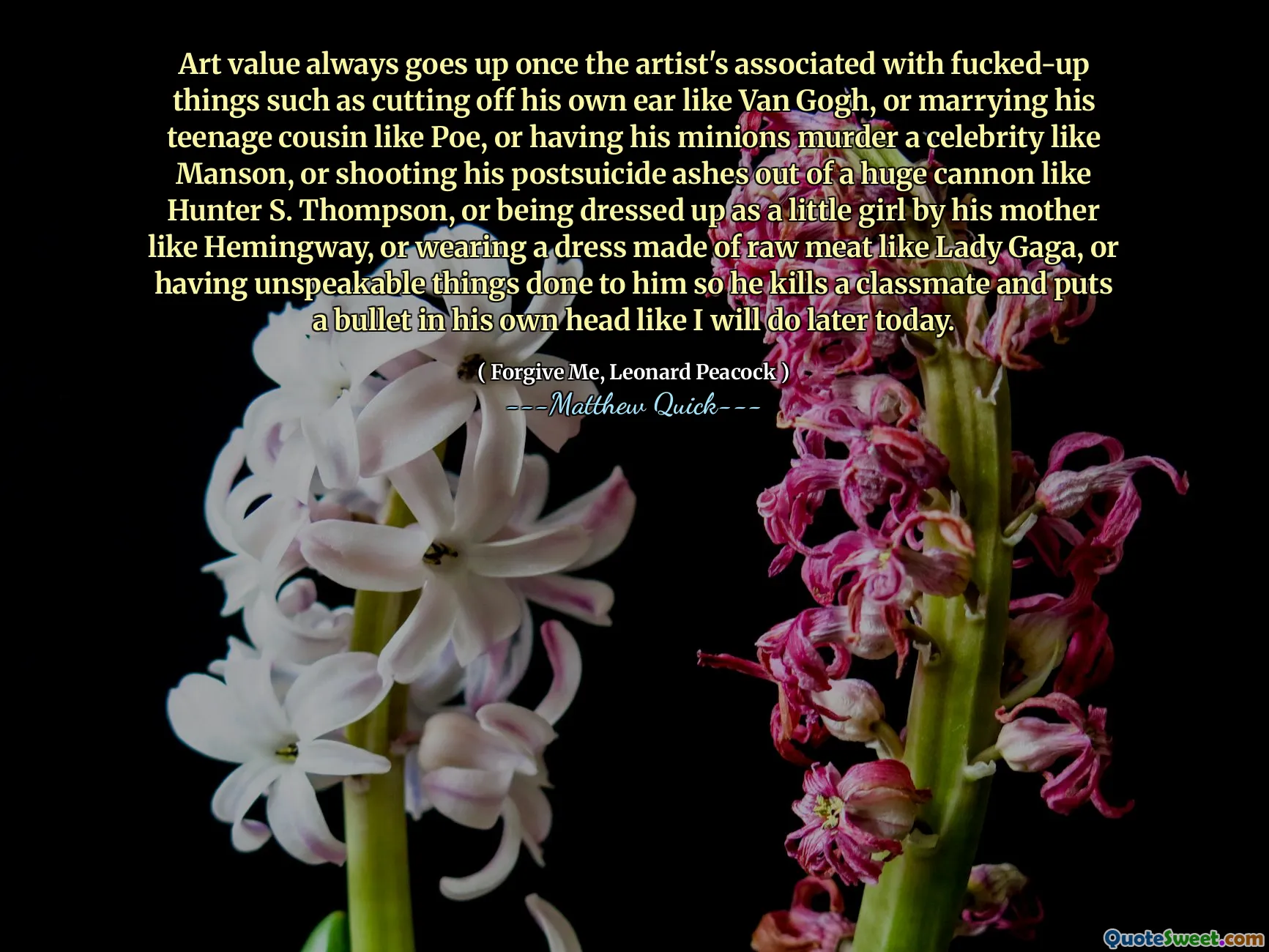
Art value always goes up once the artist's associated with fucked-up things such as cutting off his own ear like Van Gogh, or marrying his teenage cousin like Poe, or having his minions murder a celebrity like Manson, or shooting his postsuicide ashes out of a huge cannon like Hunter S. Thompson, or being dressed up as a little girl by his mother like Hemingway, or wearing a dress made of raw meat like Lady Gaga, or having unspeakable things done to him so he kills a classmate and puts a bullet in his own head like I will do later today.
The value of art often increases when an artist is linked to troubled or controversial aspects of their life. Historical figures like Van Gogh, who famously cut off his own ear, and Edgar Allan Poe, who married his young cousin, exemplify how personal struggles can heighten public fascination and appreciation for their work. Other artists, such as Manson and Hunter S. Thompson, have similarly drawn attention through their extreme behaviors and tragic narratives, leading audiences to regard their contributions to art and literature with heightened reverence.
In Matthew Quick's "Forgive Me, Leonard Peacock," this connection between personal turmoil and artistic legacy is explored as a theme. The mention of infamous behaviors, from Hemingway's unconventional childhood to Lady Gaga's shocking fashion statements, suggests that artists often become symbols of their struggles. The blurring line between an artist’s life and their work serves as a reminder of how societal perceptions of tragedy and madness can influence the legacy and financial worth of their art.






